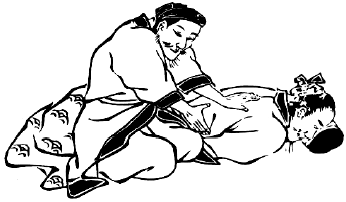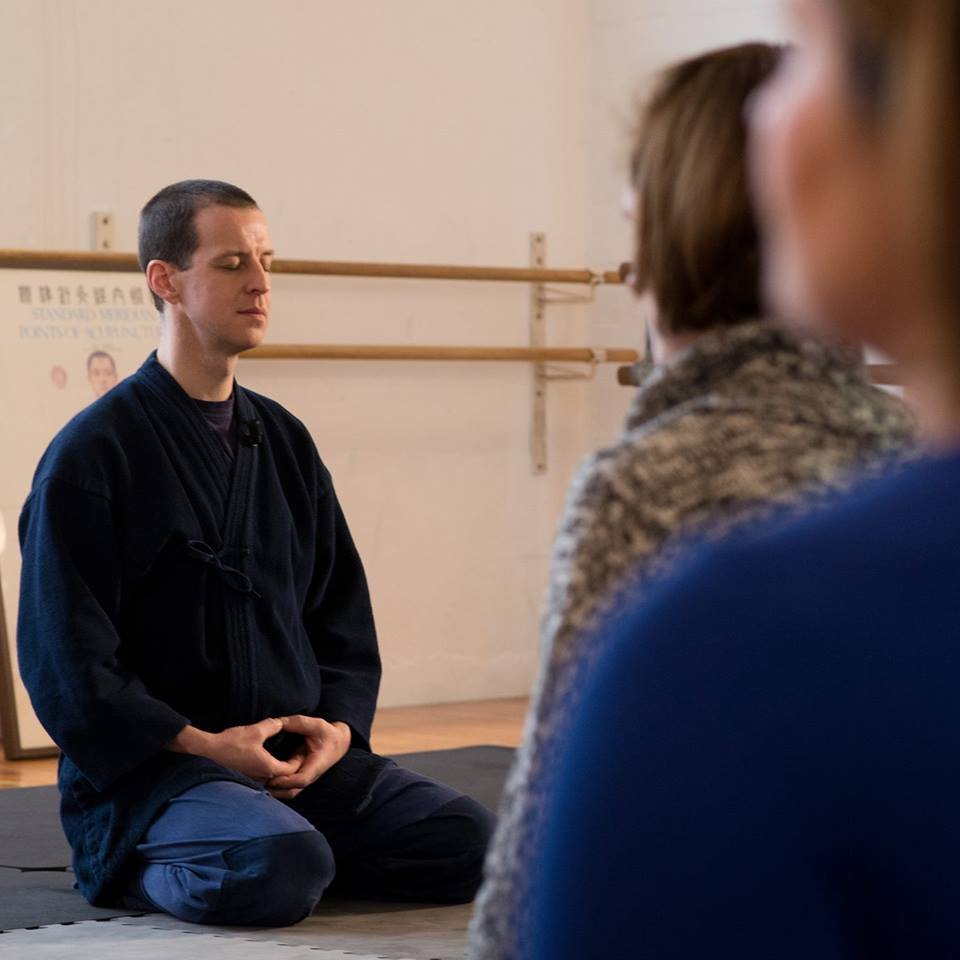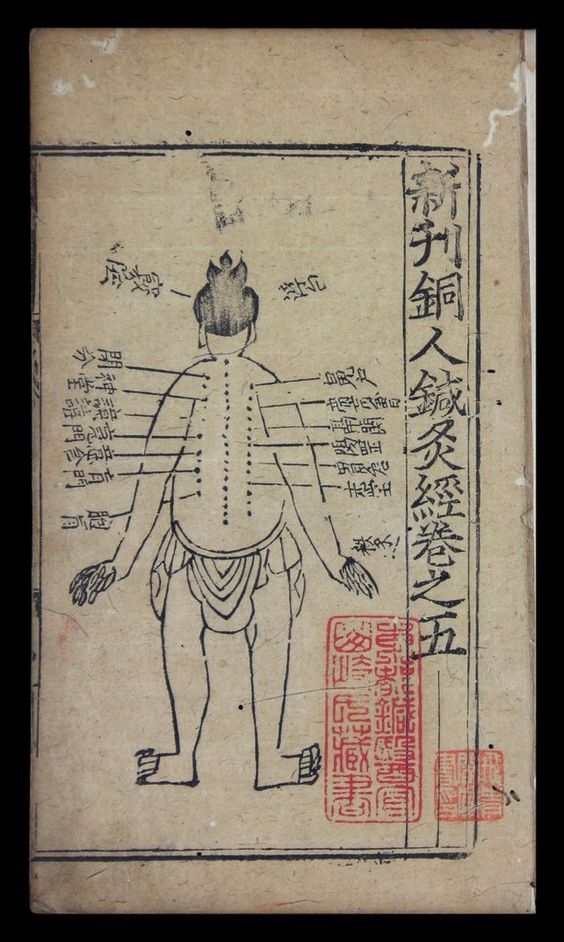In 1928, Kazuma Fukunaga (福永数間), published “Chikara ōyō ryōhō” (力応用 療法, Power Therapy) printed at author’s expense. It includes an appendix entitled “Shiatsuhō” ( 指圧法, Shiatsu Method) and it is the very first time the term “Shiatsu” appears in a publication. A new technique is born, whose roots are in Anma massage.
In 1939, Kazuma Fukunaga published under the pen name Tenpeki Tamai (玉井天碧) the first book entirely dedicated to his creation “Shiatsu-hō” (指圧法 – Shiatsu technique), and on the 4th page “Shiatsu-hō” (指圧療法 – Shiatsu therapy). It is this last term that will be used by all Japanese authors in the majority of the books that will follow. With more than 600 pages, including a long introduction to modern anatomy, but also many spiritual advices to become a good practitioner, it is the founding book of Shiatsu. In homage to the work of all the Japanese founders and authors, we have named our style Ryōhō Shiatsu.
Because of its Japanese origins, Shiatsu includes a very vast and codified curriculum. The Ryōhō Shiatsu is as much about finding the roots of this manual art as it is about teaching its evolutions with a precise objective: efficiency. Any technique that does not prove itself is not taught.


Our philosophy
We attach particular importance to the triple path (martial arts, meditation, shiatsu), as they are mutually nourishing. This is why the principles of Ryōhō Shiatsu are the same as those found in Japanese budo because the gestures, postures, ergonomics in movement, mental calm, breathing, the ability to decide (make a decision), the balance between efficiency and well-being are the same. This is why our links and relationships with Japan are at the heart of the development of Ryōhō Shiatsu.
Ryōhō Shiatsu is not just another style or way of practicing Shiatsu. It is based on two major concepts:
– the Heaven-Man-Earth relationship, which is widely deepened. This tryptic is declined in many aspects such as the pressures (slow, medium, fast), the depth (light, medium, deep), the levels of shiatsu (relaxation, energetic, therapeutic) or the three focuses, the three spiritual centers (Dantian), the three Treasures (Qi, Jing, Shen), etc…
– the improvement of all practitioners of any style or school to reach the therapeutic level, both in mechanical and energetic shiatsu. This implies a thorough study of oriental medicine, and advanced knowledge in anatomy, psychology and energetics of the human being.
So there is not a style specific to Ryōhō Shiatsu but a will to raise the level of all. We thus gather all practitioners and teachers who wish to spread this approach of Shiatsu.
Our training courses
1- Basic training
Anyone wishing to learn Shiatsu must take 4 years (or a minimum of 500 hours of classes) at one of the Ryōhō Shiatsu schools before passing the final exam. Studies cover shiatsu, palpatory anatomy, ethics, energetics, Chinese medicine, etc.
2- Post-graduate training
For those who want to go further and are already Shiatsu practitioners, regardless of the school you attended, you can take 4 years (or a minimum of 500 hours) of training courses. All the Ryōhō Shiatsu courses count and you can accumulate the certificates of participation to apply for a post-graduate examination, the equivalent of 8 years of study.
3- Training as an assistant
There is little or no training for future teachers. Ryōhō Shiatsu offers training as assistants for 4 years (or a minimum of 500 hours), i.e. with the two previous courses, the equivalent of 12 years’ training. You will be followed in your progression by one of the main teachers of the Ryōhō Shiatsu group up to teacher level 1.
4- Teacher grades
Based on the old Japanese diploma system, teachers are expected to progress continuously and, when they are ready, to pass the different levels of Ryōhō Shiatsu, i.e. the menkyo choden, chuden, okuden and kaiden.
Come and join us!
